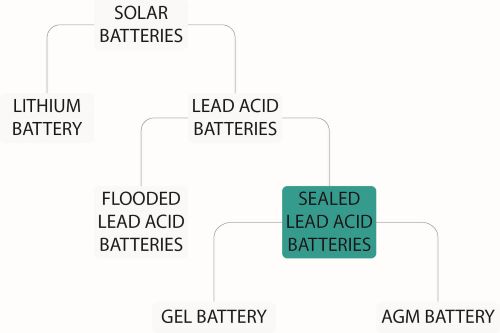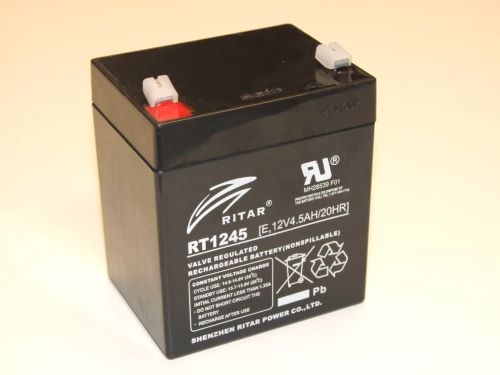Table of Contents
Sealed Lead Acid Batteries: The Best Alternative Solar Battery
What is a sealed lead acid battery?
Sealed lead acid batteries are a great alternative solar battery. They’re cheaper than lithium and don’t need maintenance like a flooded lead acid battery.
Sealed lead acid is one of two types of lead acid batteries. Flooded lead acid is the other. While they both have the same size, weight, efficiency and performance, there are some critical differences between them.

What’s the difference between flooded lead acid and sealed lead acid batteries?
Sealed lead acid batteries don’t require maintenance and they’re cheaper than flooded lead acid batteries.

Sealed lead acid batteries are called Valve Regulated Lead Acid (VRLA) batteries because they have valves that release gas if pressure builds up. This happens as the battery recharges. The valves eliminate the problem of gassing that a flooded lead acid battery has.
Sealed batteries don’t require an equalizing boost. An equalizing boost is used on a flooded lead acid battery to prevent sulfation which reduces the batteries capacity.
Sealed lead acid batteries also don’t “dry out” so you don’t need to add water to them as you do with flooded lead acid batteries. Instead sealed lead acid batteries combine oxygen and hydrogen to create water. This eliminates the need to water the battery.
Because of calcium added to its plates to reduce water loss, a sealed battery recharges quicker than a flooded lead acid battery.
| SEALED LEAD ACID BATTERY | FLOODED LEAD ACID BATTERY | |
| Needs an equalizing charge | No | Yes |
| Needs watering | No | Yes |
| Experiences gassing | No | Yes |
Sealed lead acid batteries use one of two ways to keep water in the battery. They either use absorbent fibreglass separators or a gel. That’s how we get Absorbent Glass Mat (AGM) and Gel batteries, the two types of sealed lead acid batteries.
Types of sealed lead acid batteries
All lead acid batteries have two lead electrodes suspended in a sulfuric acid electrolyte. An electrolyte is a substance that conducts electricity when dissolved in water.
VRLA batteries also use sulfuric acid, except the electrolyte is immobilized. In AGM they do this with a fibreglass mat; in gel batteries, the electrolyte is a paste-like gel.
1 Absorbent Glass Mat (AGM) battery
In an AGM battery, the sulfuric acid is injected into a sealed fibreglass mat, making the battery spill-proof. AGM batteries are the least expensive battery for solar. They last between 4 to 6 years if you follow the recommended depth of discharge of 50%.
They tend to be bigger and heavier than flooded lead acid, but this is offset by the ability to stack them on their side.
Check out my post on absorbent glass mat batteries for a closer look at the pros and cons of AGM batteries.
2 Gel battery
Gel batteries immobilize the sulfuric acid with silica gel. This reduces water loss and gassing that create the maintenance requirement of a flooded lead acid battery.
Though more expensive than AGM batteries, they do, however, have a longer lifespan of up to 12 years if you observe the 50% depth of discharge.
For a complete rundown, check out my guide to gel batteries.
Pros and cons of sealed lead acid batteries
Sealed lead acid batteries have a few advantages and limitations compared to flooded lead acid and lithium batteries.
Pros of sealed lead acid batteries
- The cheapest solar battery.
- Can be installed in any orientation which helps if you’re short on space. Flooded lead acid must be upright.
- Charge quicker than flooded lead acid.
- No maintenance required.
Cons of sealed lead acid batteries
- Shorter lifespan compared to flooded lead acid.
- Sensitive to overcharging.
When should you choose sealed lead acid batteries
Sealed lead acid batteries are perfect for a battery backup system for load shedding and blackouts. They’re cheaper and don’t need maintenance.
They’re also ideal for off-grid homes, especially homes used only a few times a year.